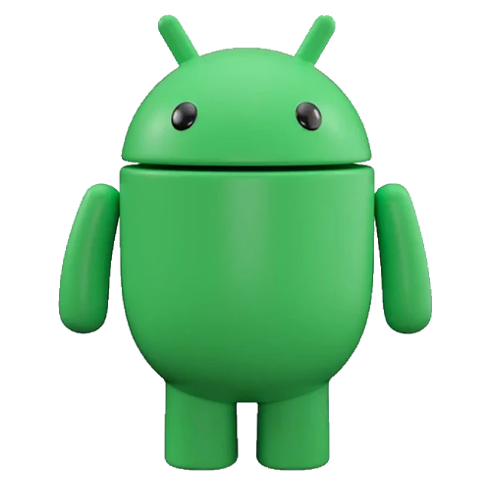
The HTC One (codenamed and retroactively called M7) is a touchscreen-based Android smartphone designed, developed, and manufactured by HTC. The smartphone was unveiled on 19 February 2013 at press events in New York City and London and is HTC’s seventh flagship smartphone.[2] It is the successor to the company’s 2012 flagship model, the One X—which was critically acclaimed, but commercially unsuccessful due in part to insufficient marketing efforts. To make the device stand out among its competition, the HTC One was developed with a major emphasis on unique hardware and software features; which included a unibody aluminum frame, a 1080p full-HD display, dual front-facing stereo speakers, a camera with a custom image sensor and the ability to automatically generate montages of media, an updated version of HTC’s Sense user experience, BlinkFeed—an aggregatorof news and social network content, and an electronic program guide app with the ability to serve as a universal remote via an IR blaster located in the device’s power button.
Beginning in March 2013, the HTC One was made available to mobile operators and major retailers in at least 181 countries. Manufacturing delays led to a staggered release beginning in late March, with its release date in certain markets (such as Asia and North America) pushed to late-April. Nevertheless, with around 5 million units being sold during its first two months of worldwide availability, HTC stated that the One was the most successful launch in the company’s history.
The HTC One was praised for the quality of its industrial design, high-density 468 ppi display, and high-power 2.6W RMS stereo sound system, and was well-received for its overall performance and improved user experience in comparison to earlier HTC devices. However, some aspects of the device, such as its photo quality, battery life, and certain elements of the device's operating system, were subject to scrutiny by critics. The device has received numerous awards and accolades, including being named "Best New Mobile Device" by the GSM Association at Mobile World Congress 2013, and was named the best smartphone of 2013 at the same conference one year later. It was succeeded by the HTC One (M8) on 25 March 2014.
History[]
Development[]
Although HTC has developed several notable Android devices, such as the Dream—the first publicly released Android device, it failed to capitalize on the first-mover advantage, and has struggled financially in recent years due to the increasing market share captured by other vendors such as Samsung and Apple. In some markets, HTC released numerous carrier-specific phones and relied heavily on wireless providers to promote its products, a strategy that was unsuccessful in the face of Samsung and Apple’s strong marketing efforts.[5] The company’s flagship phone in 2012, the One X, received critical acclaim from reviewers, but was commercially unsuccessful in the wake of the Galaxy S III and the iPhone 5. In response, the company planned to take bigger risks with their next flagship device to make it stand out among its competitors, and also planned to take a more direct role in promoting its products—doubling its marketing budget for 2013.
Details of the new device, codenamed "M7", were leaked from various sources in the weeks prior to its official unveiling. HTC’s CEO Peter Chou officially confirmed and briefly revealed a prototype for the new device during a company event on 1 February 2013. Leaked information speculated that the M7 would include a 1080p display, a quad-core processor, a redesigned version of HTC’s Sense software, and carry design traits from the Butterfly.[7][8] The M7 was officially unveiled under the HTC One product line at a special launch event on 19 February 2013, in New York City and London. HTC originally announced that the HTC One would be released worldwide in March 2013 through 185 carriers and retailers in 80 countries, making it the largest global launch in the company′s history.
Release[]
HTC initially announced that the One would be released in the United Kingdom on 15 March. However, due to high demand and supply issues (especially surrounding the components used by its camera), HTC announced on 22 March that the device would "roll out in the U.K., Germany and Taiwan next week and across Europe, North America and most of Asia-Pacific before the end of April." In the United Kingdom, online pre-orders were shipped by some carriers around the time of HTC’s announcement.[10][11][12] In late-April 2013, the HTC One was released across major carriers in the United States and Australia, and a network-unlocked 32 GB version also became available on the HTC web store.[13] In the U.S., the 64 GB HTC One is exclusively sold by AT&T.[14][15][16]Following the delays, HTC North Asia’s president Jack Tong announced that the company would double its production capacity for the device by mid-May to meet growing demand and competition for the device, and to make up for sales lost by the release delays.[17] On 22 August 2013, four months after it was released by its competitors, Verizon Wireless became the final major carrier to release the HTC One in the United States.
Alongside its stock silver model, the HTC One has been offered in three additional color finishes; black, red, and blue. Color variants are exclusive to certain carriers and retailers; in Australia, the black variant is exclusive to Telstra, while the red variant (released in July 2013) has been exclusive to Phones 4u in the UK and Sprint in the US.[16][20][21] The blue variant (released in September 2013) is exclusive to Carphone Warehouse in the UK and Best Buy in the US.[22][23] A champagne-colored HTC One was released on select European carriers in late-November 2013.
A special variant electroplated in 18 carat gold was unveiled by HTC in October 2013 as part of a collaboration with Goldgenie and the Music of Black Origin Awards. Five models were produced in a limited production run; out of the five, one model was given to the winner of the "Best Newcomer" category at the ceremony in Glasgow on 19 October, and others were given away in a promotional contest. Discussing the partnership, HTC’s EMEA president Phil Blair explained that "the best artists have always been given gold discs to celebrate their success, but today most people listen to music on their phone. We wanted to celebrate that fact." Valued at US$4,442 (£2,750), the gold HTC One is the most expensive product produced in company history.
Litigation[]
In April 2013, Nokia was granted a preliminary injunction in the Netherlands against STMicroelectronics, which had supplied HTC with microphone components for the device that contained Nokia’s proprietary technology.[26] Despite the injunction being against STM, Nokia still used the injunction to publicly accuse HTC of copying technology from its products. HTC would still be able to use the remaining microphones it acquired in good faith; the offending component was replaced with an alternative version in future production runs.
In December 2013, the HTC One Mini was banned from sale in the United Kingdom as the result of another patent infringement lawsuit by Nokia. While the HTC One was also affected by the ruling, its sales ban was stayed by the court pending an appeal; the judge indicated that banning HTC One sales would have a negative effect on the company. The case also inadvertently revealed that HTC was planning to launch a successor to the HTC One in early 2014.
